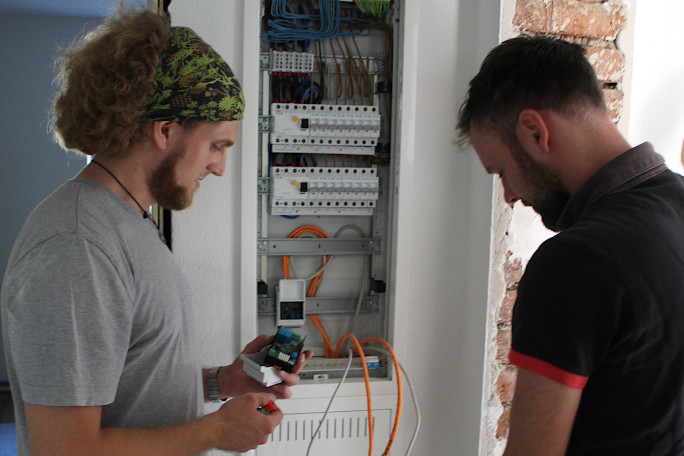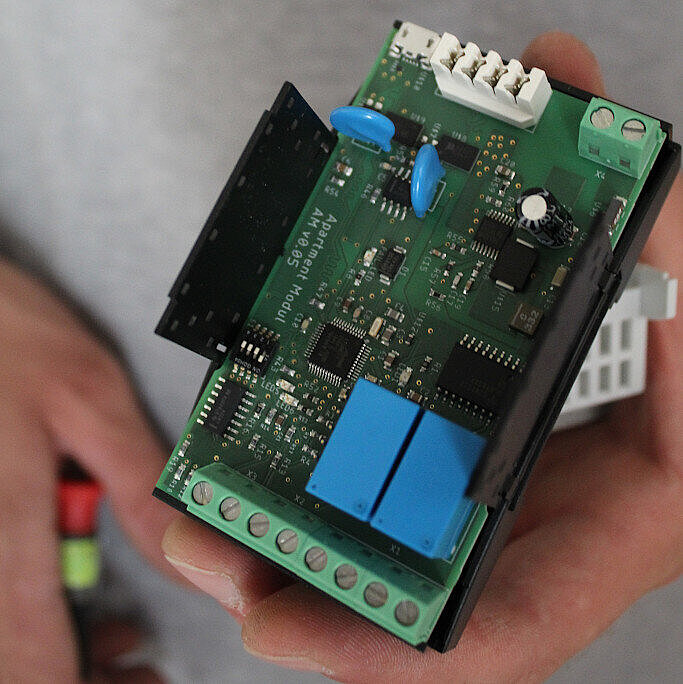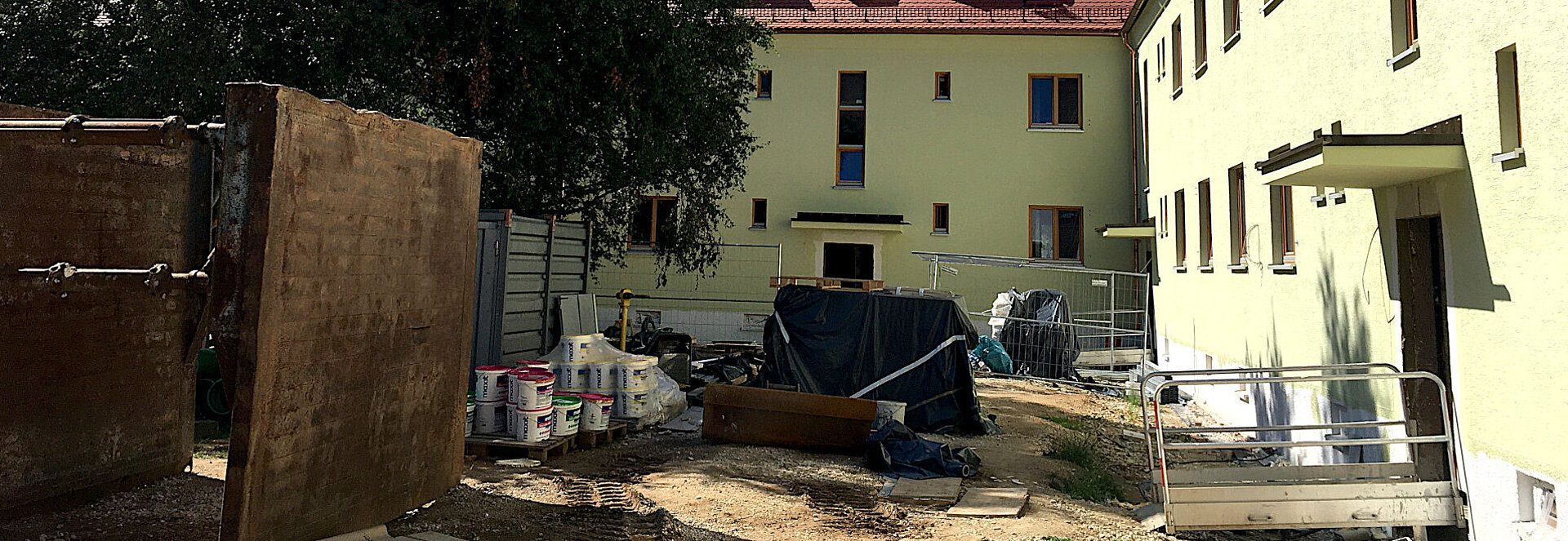MAGGIE
The German Federal Government’s energy-saving and climate-protection plan calls for CO2 emissions to be reduced by 80 to 95 percent by 2050 compared to the year 2008. Buildings consume more than a third of all energy worldwide and directly or indirectly cause a third of global CO2 emissions.
The large-scale MAGGIE project is intended to demonstrate that future-proof modernization of residential buildings does not inevitably have to result in rent increases. When it comes to saving energy and thus rent, the residents of the cooperative residential area Margaretenau (Baugenossenschaft Margaretenau) are helped by AI-supported planning and control software.
MAGGIE is currently the largest research project at OTH Regensburg. It has a total funding volume of 3.4 million euros, which mostly comes from the German Federal Ministry for Economic Affairs and Energy, with support from the Regensburg Center of Energy and Resources (RCER). Several partners are involved in addition to the university: the City of Regensburg, the Building Cooperative Margaretenau eG, the University of Bayreuth, and the Franken Maxit company, as well as some companies as subcontractors. The Regensburg Energy Agency supports the dissemination and wider economic use of the results.


Resolving Conflicting Goals through Innovation
Thirty employees from six faculties of OTH Regensburg are involved in the project, which is headed by Professor Oliver Steffens. The ambitious task was to tackle the ecological-energetic, economic, and social aspects of the modernization together, explains Steffens, who is also Dean of the Faculty of Applied Natural Sciences and Cultural Studies. The central question is: “How do we manage to modernize a historic residential building with scarce resources and meet the requirements of climate protection without having to increase the residents’ rents at the same time?"
The apparent conflict between these goals was resolved by a combination of innovative measures. One component is a careful modernization of the historical facades using a solar-active external plaster with innovative building materials. A second, essential component is a highly efficient hybrid combination of a combined heat and power unit and heat pump technology in conjunction with photovoltaics for heating, electricity, and drinking water supply.
How do we manage to modernize a historic residential building with scarce resources and meet the requirements of climate protection without having to increase the residents' rents?Oliver Steffens, Professor at OTH Regensburg and Head of the Project
Steffens is also convinced: “While it was initiated within a regional team from the local urban perspective, MAGGIE aims at new technological advances concerning the retrofitting and an intelligent CO2-free energy supply for residential quarters, which has become a challenge for urban development in all countries. The application of artificial intelligence, combined with novel ideas for energy savings within the heat distribution system, provides interesting perspectives that should be discussed and further developed on regional, national, and international levels.”
Hot Water if Required
The heart of the building, the intelligent control system, is located in the basement. It is connected to the top by a microcontroller-based module. “This is the extended arm of the artificial intelligence into the apartment,” explains project employee David Michlbauer, looking at an inconspicuous switch box. The 27-year-old developed the module, which is now almost ready for the market. Anonymous information from a total of 78 temperature and humidity sensors, 30 control modules for the drinking water stations, and a detailed measuring station for the new facade systems come together in the BUS system.
This system records the indoor climate data in all 30 apartments in the demonstration building and generates valuable information for optimal heating of the rooms. Additional requirement profiles can be created for the service water. According to Michlbauer, they help to monitor the energy requirement and thus minimize it. A whole team of doctoral students and employees from OTH Regensburg is working on this development of an intelligent and dynamic system for heat distribution in the building. “It makes no sense for hot water to constantly circulate through the pipe when it is not needed during the day,” says Michlbauer, “especially not when the residents are on vacation for two weeks.”
Harnessing Data to Save Money—and Energy
While the modules feed the AI in the basement with measurement data for the optimal energetic control of the apartments, the optimization software thinks outside the box—more precisely: outside the walls of the building complex. It gathers weather, consumption, and electricity-market forecasts and uses them to create the optimal timetable for the generation plants. This enables the system to be operated more cheaply, which in turn has a direct effect on the additional rental costs for the tenants and sets a standard for socially acceptable living in a highly modern building. This goal plays a central role in the AI optimization team.
Expected Energy Savings
- 60 percent through insulation measures on the outside of the building
- 25 percent through new domestic hot-water logistics—5 percent of which through double pipe insulation
- additional savings to be made in the heating system
Overall annual savings of about 40 tons of CO2 (for the demonstration building with 30 residential units) are expected.
Acceptance through Information
Highly complex and technically demanding energetic modernization activities like those at MAGGIE must be explained in detail to be accepted by the residents. In order to investigate this, the Institute for Social Research and Technology Assessment (IST) at OTH Regensburg accompanied the project with a study and distributed 344 questionnaires. In the almost 200 returned sheets, the tenants expressed concern. It was particularly important to them to be able to return to their old apartment after being relocated temporarily for the course of the renovation. “A particularly large number of elderly people live in Margaretenau,” says sociology professor Sonja Haug, who is one of the three authors of the study. “Experience has shown that a familiar living environment is particularly important for these age groups.”
Despite all the concerns, there was still a great deal of trust in the Margaretenau building cooperative (Baugenossenschaft Margaretenau)—in part because the residents were kept informed in many ways. “The participation of an independent advisory institution such as the Regensburg Energy Agency, but also that of OTH Regensburg, also increased confidence.” The residents were generally very open to technical solutions for saving energy—as long as the total rent would be kept constant.
A Laboratory for Ongoing Research
The scientific work of the MAGGIE project will certainly not be concluded with the approaching end of the project, explains project coordinator Michael Riederer. “The countless amounts of data make MAGGIE a real laboratory, in which further research can be carried out over the next few years, for example in the form of master’s theses and doctoral research.” MAGGIE was also just the beginning for the building cooperative itself: a renovation concept is currently being drawn up for the entire district. Tobias Saller, spokesman for redevelopment management at Margaretenau, confirms: “The course has been set for the sustainable development of the Margaretenau district.” The charm of the “Au” is retained, while the technology that operates in secret is already making the district fit for its 2050 climate goals.



